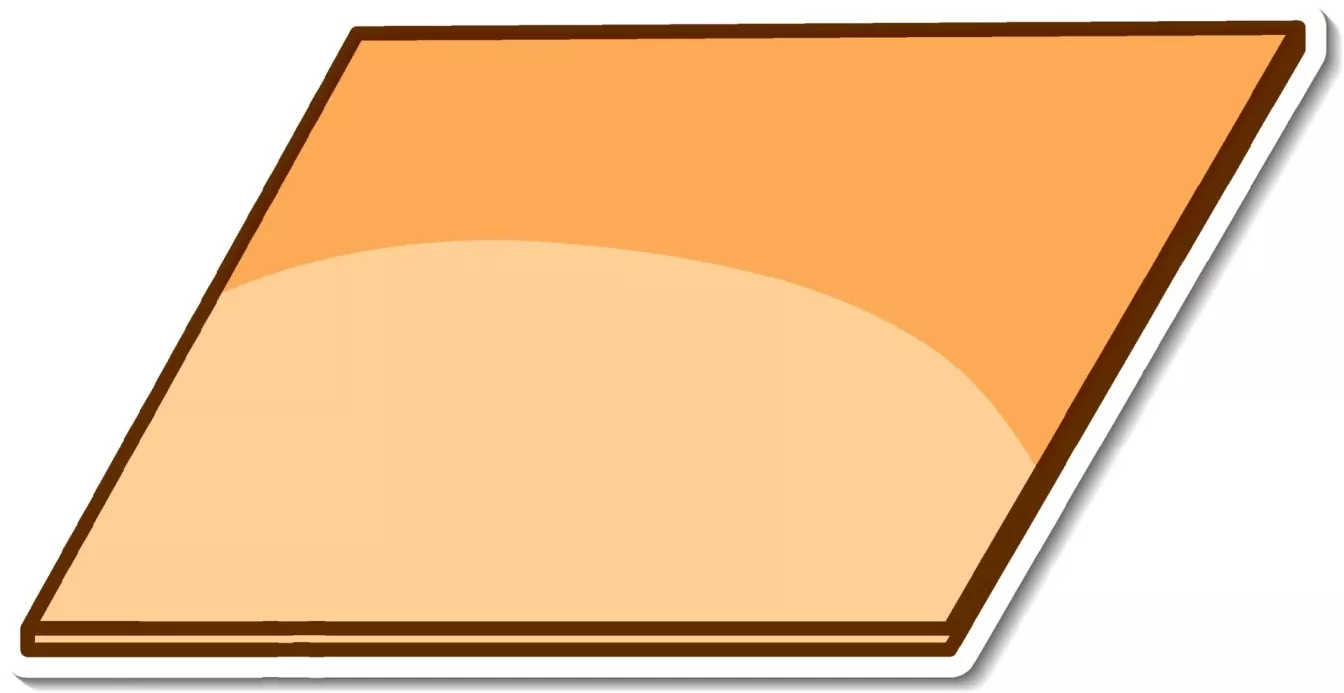Fractions - Addition & Subtraction
In this article, we will learn more about Addition and Subtraction of Fractions in \(\text{P5}\) level. We will also be solving simple word problems involving addition and subtraction.
The learning objectives are:
- Relating fractions and division
- Addition of mixed numbers
- Subtraction of mixed numbers
- Simple word problems involving addition and subtraction of mixed numbers
1. Relating Fractions And Division
Fraction is related to division.
\(\begin{align*} \frac {1} {3} \end{align*}\) is the same as \(\begin{align*} 1 \div 3 \end{align*}\).
Question 1:
Express each of the following as a fraction.
A. \(3 \div 5 =\text{__________}\)
B. \(5 \div 9 = \text{__________}\)
C. \(6 \div 11 = \text{__________}\)
Solution:
A. \(\displaystyle{3 \div 5 =\frac {3}{5}}\)
B. \(\displaystyle{5 \div 9 = \frac {5}{9}}\)
C. \(\displaystyle{ 6 \div 11 = \frac {6}{11} }\)
Question 2:
Mary bought \(2\) pies. She divided it equally among her \(3\) children. What fraction of a pie did each child receive?
Solution:
Fraction of a pie each child received \(\displaystyle{=2 \div 3\\[2ex] = \frac {2}{3} }\)
Answer:
\(\begin{align*} \frac {2}{3} \end{align*}\)
Question 3:
Jack baked \(15\) muffins and shared them equally with \(6\) friends. What fraction of the muffins did each of them receive?
Solution:
Total muffins baked \(= 15\) muffins
Total number of friends including Jack \(= 7\)
15 muffins are shared \(\text{equally}\) among \(7 \text{ people}\).
Method 1:
Fraction of muffins received by each friend \(\displaystyle{= 15 \div 7\\[2ex] = \frac{15}{7}\\[3ex] = 2\frac{1}{7}\\[3ex]}\)
Method 2:
\(\require{enclose} \begin{array}{rll} 0 \;2\phantom{000} \\[-3pt] 7\; \enclose{longdiv}{1\;5\quad}\kern-.3ex \\[-3pt] \underline{^-0\phantom{000}} \\[-3pt] 1\;5 \phantom{00} \\[-3pt] \underline{^-\text{1 4}\quad}\phantom{} \\[-3pt] 1 \phantom{00} \\[-3pt] \end{array}\)
Answer:
\(\begin{align*} 2 \frac {1}{7} \end{align*}\)
2. Addition Of Mixed Numbers
To do addition of mixed numbers, we do the following steps:
Step 1:
Add the whole numbers.
Step 2:
Ensure that the denominators are the same. Make the denominators the same if they are not.
Step 3:
Add the fractions.
Step 4:
Simplify and express as a mixed number if possible.
Question 1:
Add the following.
\(\begin{align*} 2\frac { 2} { 5} + 5\frac {1 } {5 } \end{align*}\)
Solution:
\(\begin{align*} 2\frac { 2} { 5} + 5\frac {1 } {5 } &= 7\frac { 2} { 5} + \frac {1 } {5 }\\ \\ &= 7\frac { 3} { 5} \\ \end{align*}\)
Question 2:
Add the following.
\(\begin{align*} 1\frac {7} {10} + 6\frac {9} {10} \end{align*}\)
Solution:
\(\begin{align*} 1\frac { 7} { 10} + 6\frac {9 } {10 } &= 7\frac { 7} { 10} + \frac {9 } {10 }\\ \\ &= 7\frac { 16} { 10} \\ \\ &= 8\frac { 6} { 10} \\ \\ &= 8\frac { 3} { 5} \\ \end{align*}\)
Answer:
\(\begin{align*} 8\frac { 3} { 5} \end{align*}\)
Question 3:
Add the following.
\(\begin{align*} 2\frac {3} {4} + 3\frac {5} {6} \end{align*}\)
Solution:
\(\begin{align*} 2\frac { 3} { 4} + 3\frac {5 } {6} &= 5\frac { 3} { 4} + \frac {5 } {6 }\\ \\ &= 5\frac { 9} { 12} + \frac {10 } {12 }\\ \\ &= 5\frac { 19} { 12} \\ \\ &= 6\frac { 7} { 12} \\ \end{align*} \)
Answer:
\(\begin{align*} 6\frac { 7} { 12} \end{align*}\)
Question 4:
Add the following.
\(\begin{align*} 1\frac {6} {7} + 5\frac {9} {14} \end{align*}\)
Solution:
\(\begin{align*} 1\frac { 6} { 7} + 5\frac {9 } {14} &= 6\frac { 6} { 7} + \frac {9 } {14 }\\ \\ &= 6\frac { 12} { 14} + \frac { 9} { 14}\\ \\ &= 6\frac { 21} { 14} \\ \\ &= 7\frac { 7} { 14} \\ \\ &= 7\frac { 1} { 2} \\ \end{align*}\)
Answer:
\(\begin{align*} 7\frac { 1} { 2} \end{align*}\)
3. Subtraction Of Mixed Numbers
To do addition of mixed numbers, we do the following steps:
Step 1:
Subtract the whole numbers.
Step 2:
Ensure that the denominators are the same. Make the denominators the same if they are not.
Step 3:
Rename the first mixed number if the numerators cannot be subtracted.
Step 4:
Subtract the fractions.
Step 5:
Simplify and express as a mixed number if possible.
Question 1:
Subtract the following.
\(\begin{align*} 5\frac {5} {6} - 1\frac {1} {3} \end{align*}\)
Solution:
\(\begin{align*} 5\frac {5} {6} - 1\frac {1} {3} &= 4\frac { 5} { 6} - \frac {1 } {3 }\\ \\ &= 4\frac { 5} { 6} - \frac {2 } {6 }\\ \\ &= 4\frac { 3} { 6} \\ \\ &= 4\frac { 1} { 2} \\ \end{align*}\)
Answer:
\(\begin{align*} 4\frac { 1} { 2} \end{align*}\)
Question 2:
Subtract the following.
\(\begin{align*} 7\frac {3} {8} - 6\frac {7} {8} \end{align*}\)
Solution:
\(\begin{align*} 7\frac {3} {8} - 6\frac {7} {8} &= 1\frac { 3} { 8} - \frac {7 } {8 }\\ \\ &= \frac { 11} { 8} - \frac {7 } {8 }\\ \\ &= \frac { 4} { 8} \\ \\ &= \frac { 1} { 2} \\ \end{align*}\)
Alternatively, convert both fractions to improper fractions.
\(\begin{align*} 7\frac {3} {8} - 6\frac {7} {8} &= \frac { 59} { 8} - \frac {55} {8 }\\ \\ &= \frac { 4} { 8} \\ \\ &= \frac { 1} { 2} \\ \end{align*}\)
Answer:
\(\begin{align*} \frac {1} {2} \end{align*}\)
Question 3:
Subtract the following.
\(\begin{align*} 6\frac {3} {10} - 1\frac {1} {2} \end{align*}\)
Solution:
\(\begin{align*} 6\frac {3} {10} - 1\frac {1} {2} &= 5\frac { 3} { 10} - \frac {1} {2}\\ \\ &= 5\frac { 3} { 10} - \frac {5} {10} \\ \\ &= 4\frac { 13} { 10} - \frac {5} {10} \\ \\ &= 4\frac { 8} { 10} \\ \\ &= 4\frac { 4} { 5} \\ \end{align*}\)
Alternatively, convert both fractions to improper fractions.
\(\begin{align*} 6\frac {3} {10} - 1\frac {1} {2} &= \frac { 63} { 10} - \frac {3} {2} \\[3ex] &= \frac { 63} { 10} - \frac {15} {10} \\[3ex] &= \frac {48} { 10} \\[3ex] &= 4\frac { 8} { 10} \\[3ex] &= 4\frac { 4} { 5} \end{align*}\)
Answer:
\(\begin{align*} 4\frac { 4} { 5} \end{align*}\)
Question 4:
Subtract the following.
\(\begin{align*} 5\frac {7} {10} - 3\frac {3} {4} \end{align*}\)
Solution:
\(\begin{align*} 5\frac { 7 } { 10 } - 3 \frac { 3 } { 4 } &= 2 \frac { 7 } { 10 } - \frac { 3 } { 4 }\\ \\ &= 2 \frac { 14 } { 20 } - \frac { 15 } { 10 } \\ \\ &= 1 \frac { 34 } { 20 } - \frac { 15 } { 10 }\\ \\ &= 1\frac { 19 } { 20 } \\ \end{align*}\)
Answer:
\(\begin{align*} 1\frac { 19 } { 20 } \end{align*}\)
4. Word Problems Involving Addition And/or Subtraction Of Mixed Numbers
Question 1:
Jane had \(\begin{align*} 2\frac { 3 } { 5 }\; \text {kg} \end{align*}\) of coffee powder. Sarah has \(\begin{align*} 1\frac { 1 } { 5 } \; \text {kg} \end{align*}\) of coffee powder more than Jane. How much coffee powder does Sarah have?
Solution:
Mass of coffee powder Sarah has \(\displaystyle{= 2 \frac { 3 } { 5 } \; \text {kg} + 1\frac { 1 } { 5 } \;\text {kg}\\[3ex] = 3 \frac { 4 } { 5 } \; \text {kg}}\)
Answer:
\(\begin{align*} 3 \frac { 4 } { 5 } \; \text {kg} \end{align*}\)
Question 2:
Mrs Tan had \(\begin{align*} 5\frac { 1 } { 2 }\; \text {kg} \end{align*}\) of flour. She had \(\begin{align*} 2\frac { 5 } { 6 }\; \text {kg} \end{align*}\) of flour more than Mrs Loh. How much flour did they have altogether?
Solution:
Mass of flour Mrs Loh had \(\displaystyle{= 5\frac { 1 } { 2 }\; \text {kg} - 2\frac { 5 } { 6 }\; \text {kg}\\[3ex] = 3\frac { 1 } { 2 }\; \text {kg} - \frac { 5 } { 6 }\; \text {kg} \\[3ex] = 3\frac { 3 } { 6 }\; \text {kg} - \frac { 5 } { 6 }\; \text {kg} \\[3ex] = 2\frac { 9 } { 6 }\; \text {kg} - \frac { 5 } { 6 }\; \text {kg} \\[3ex] = 2\frac { 4 } { 6 }\; \text {kg} \\[3ex] = 2\frac { 2 } { 3 }\; \text {kg}}\)
Total mass of flour they had \(\displaystyle{= 5\frac { 1 } { 2 }\; \text {kg} + 2\frac { 2 } { 3 }\; \text {kg} \\[3ex] = 7\frac { 1 } { 2 }\; \text {kg} + \frac { 2 } { 3 }\; \text {kg} \\[3ex] = 7\frac { 3 } { 6 }\; \text {kg} + \frac { 4 } { 6 }\; \text {kg} \\[3ex] = 7\frac { 7 } { 6 }\; \text {kg} \\[3ex] = 8\frac { 1 } { 6 }\; \text {kg}}\)
Answer:
\(\begin{align*} 8\frac { 1 } { 6 }\; \text {kg} \end{align*}\)
Question 3:
Sandy had \(\begin{align*} 3\frac { 1 } { 2 }\; \text {kg} \end{align*}\) of sugar. She had \(\begin{align*} 2\frac { 5 } { 6 }\; \text {kg} \end{align*}\) of sugar less than Amy. How many kilograms of sugar did they have altogether?
Solution:
Mass of sugar Amy had \(\displaystyle{= 3\frac { 1 } { 2 }\; \text {kg} + 2\frac { 5 } { 6 }\; \text {kg} \\[3ex] = 5\frac { 1 } { 2 }\; \text {kg} + \frac { 5 } { 6 }\; \text {kg} \\[3ex] = 5\frac { 3 } { 6 }\; \text {kg} + \frac { 5 } { 6 }\; \text {kg} \\[3ex] = 5\frac { 8 } { 6 }\; \text {kg} \\[3ex] = 6\frac { 2 } { 6 }\; \text {kg} \\[3ex] = 6\frac { 1 } { 3 }\; \text {kg}}\)
Total mass of sugar Sandy and Amy had \(\displaystyle{= 3\frac { 1 } { 2 }\; \text {kg} + 6\frac { 1 } { 3 }\; \text {kg} \\[3ex] = 9\frac { 1 } { 2 }\; \text {kg} + \frac { 1 } { 3 }\; \text {kg} \\[3ex] = 9\frac { 3 } { 6 }\; \text {kg} + \frac { 2 } { 6 }\; \text {kg} \\[3ex] = 9\frac { 5 } { 6 }\; \text {kg}}\)
Answer:
\(\begin{align*} 9\frac { 5 } { 6 }\; \text {kg} \end{align*}\)
Conclusion
In this article, we have learnt about Addition and Subtraction of Fractions as per the Primary 5 Math level. We have learnt the following subtopics in fractions.
- Relating fractions and division
- Addition of mixed numbers
- Subtraction of mixed numbers
- Simple word problems involving addition and subtraction of mixed numbers


 SG
SG  VN
VN 
















